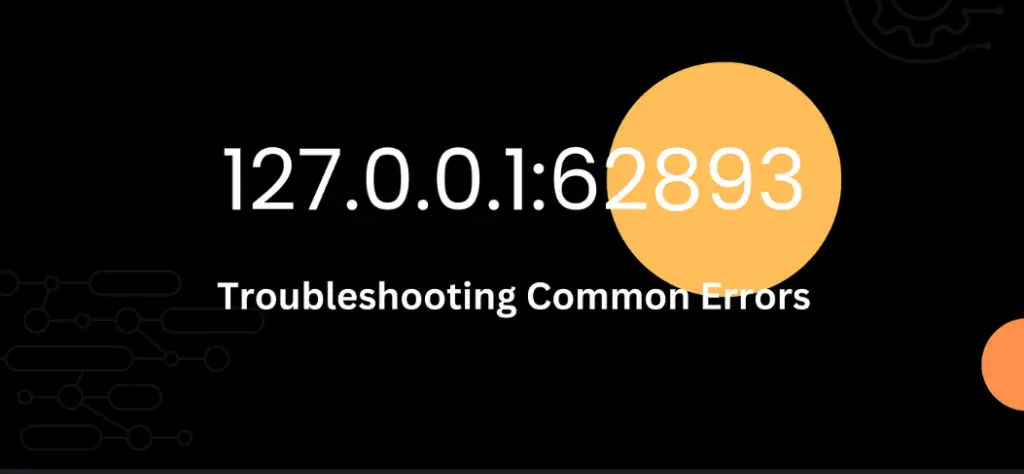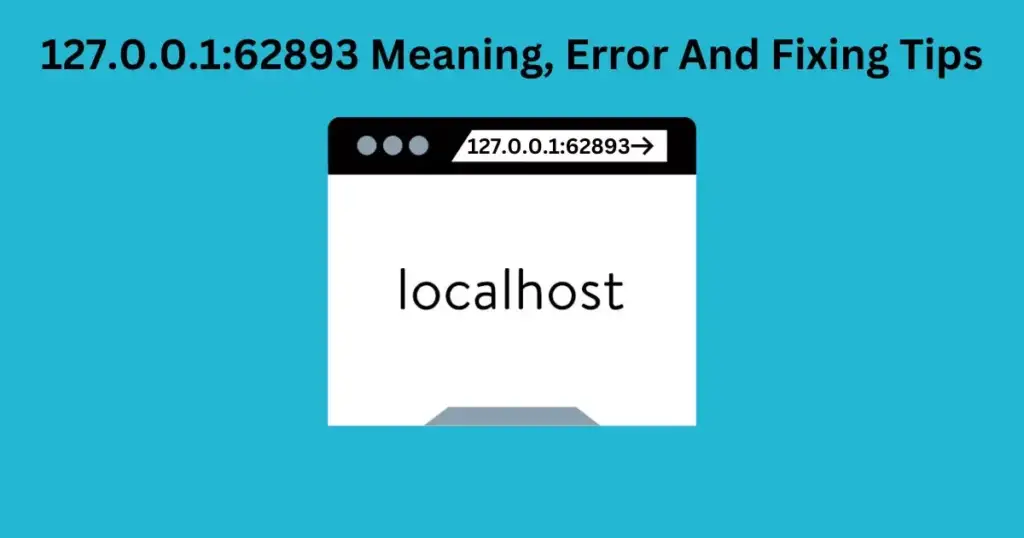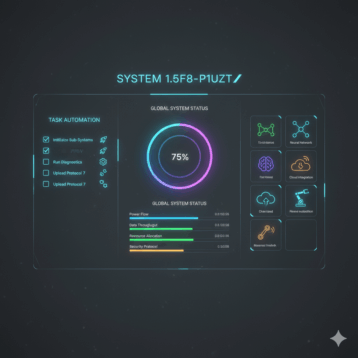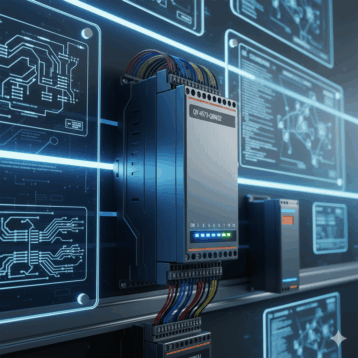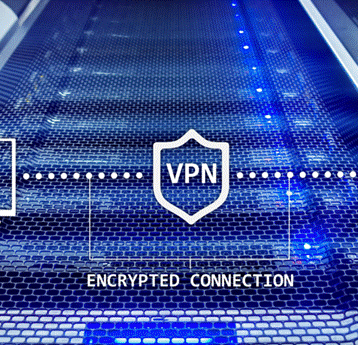In networking, the IP address 127.0.0.1, also called localhost, is extremely important. It facilitates self-communication between computers, a function that is widely utilized in testing, development, and debugging. When combined with a port number, such as 62893, it designates an exact network communication endpoint. This IP address and port number combination is frequently used in server setups and application development, among other configurations.
Understanding 127.0.0.1: Localhost Explained
In the IPv4 address space, 127.0.0.1 is a specific reserved IP address that is used as a loopback. It’s employed to create an IP connection to the same device or PC that the end user is using. The routing of outgoing network traffic back to the same device without passing it through a physical network is referred to as “loopback” usage. To test network software and configurations without using external networks, this approach is essential.
In essence, you are determining whether the network stack on your computer is operating correctly when you “ping” 127.0.0.1. To ensure that the fundamental networking functioning is not compromised, this is a crucial initial step in diagnosing networking difficulties.
Common Uses of Localhost
Localhost is an indispensable tool for developers and system administrators. It allows for the testing and development of applications in a controlled environment. For instance:
- Web Development: Developers can set up a local web server using software like Apache, Nginx, or IIS to test their websites and applications before deploying them to a live server.
- Database Management: Database administrators can run local instances of databases such as MySQL, PostgreSQL, or MongoDB for testing queries and database operations.
- Application Testing: Developers use localhost to test applications, ensuring they handle network requests and responses correctly without affecting live environments.
By using localhost, developers can replicate the production environment locally, making it easier to identify and fix issues before they reach end users.
The Significance of Port 62893
As entry points for data transfer between computers and devices, ports are essential to network communications. Many network services can run concurrently on a single device since each port number relates to a distinct process or service.
Ports are categorized into three ranges:
- Well-Known Ports (0-1023): Reserved for widely used services and protocols (e.g., HTTP on port 80, HTTPS on port 443).
- Registered Ports (1024-49151): Assigned to specific services and applications by the Internet Assigned Numbers Authority (IANA).
- Dynamic or Private Ports (49152-65535): Used for temporary or private purposes, often dynamically assigned by the operating system.
Common Errors Associated with 127.0.0.1:62893
Various errors can occur when dealing with 127.0.0.1:62893. Some of the most common include:
- Connection Refused: This error occurs when a service is not running or is not configured to accept connections on the specified port. It indicates that the server at 127.0.0.1 is reachable, but nothing is listening on port 62893.
- Timeout Errors: These errors happen when the service takes too long to respond. This could be due to the service being overloaded, network latency, or misconfigured settings.
- Address Already in Use: This error indicates that another application or process is already using port 62893. This can occur if the port was not properly released after a previous session or if many services are configured to use the same port.
Causes of Errors
The root causes of these errors can vary widely:
- Misconfigured Settings: Incorrect service or network settings can prevent proper communication.
- Software Conflicts: Many applications attempting to use the same port can cause conflicts.
- Firewall Restrictions: Firewalls can block network traffic to specific ports, causing connectivity issues.
- Malware or Security Software: Security software or malware can interfere with network communications, leading to errors.
Identifying the underlying cause is essential for effective troubleshooting and resolution.
How to Diagnose Issues with 127.0.0.1:62893
Several tools can assist in diagnosing network issues related to 127.0.0.1:62893:
- Ping: This command checks the reachability of an IP address. Running ping 127.0.0.1 verifies if the local network stack is operational.
- Netstat: This tool displays active connections and listening ports. Using netstat -an | find “62893” can show whether port 62893 is in use and by which application.
- Telnet: Telnet can test connectivity to a specific port. Executing telnet 127.0.0.1 62893 checks if the port is open and accepting connections.
- Wireshark: This network protocol analyzer captures and examines network traffic, providing detailed insights into network communications and potential issues.
Extensive Diagnostic Guide
- Verify the Service: Confirm that the service or application using port 62893 is running. Check the service status through your system’s service manager or command-line tools.
- Check Connectivity: Use the ping 127.0.0.1 command to ensure that localhost is reachable. This step verifies that the basic network stack is functioning.
- Inspect Active Ports: Run netstat -an | find “62893” to see if the port is actively being used. This helps identify if the port is bound to the expected service.
- Test Port Access: Use telnet 127.0.0.1 62893 to check if the port is open and accepting connections. A successful connection indicates that the service is running and accessible.
- Analyze Network Traffic: Launch Wireshark and capture traffic on 127.0.0.1 and port 62893. This provides detailed information on the data packets being sent and received, helping to identify anomalies or issues.
Fixing Errors Related to 127.0.0.1:62893
- Restart the Service: Often, restarting the service or application can resolve issues. This can be done through the system’s service manager or command-line tools.
- Check Configuration Files: Ensure that the service configuration files are correctly set up. Misconfigured settings can prevent the service from functioning properly.
- Free Up the Port: If port 62893 is already in use, identify and stop the conflicting service. Use netstat or similar tools to find the process using the port and terminate it if necessary.
- Adjust Firewall Settings: Ensure that the firewall allows traffic on port 62893. Change firewall rules to permit inbound and outbound connections to this port.
Advanced Troubleshooting Steps
- Update Software: Keeping your operating system and applications up to date can resolve known issues and security vulnerabilities that might affect network communication.
- Check Logs: Review the service and system logs for any error messages or warnings. Logs can provide valuable insights into what might be causing the issue.
- Reinstall the Service: If the issue persists, consider reinstalling the service or application. This can resolve issues related to corrupted files or configurations.
- Seek Help: If all else fails, seek help from online forums, user communities, or professional support. Providing detailed information about the issue and steps taken can help others assist you more effectively.
Preventing Future Issues
- Regularly Monitor Services: Continuously track running services and their assigned ports to quickly identify and address issues.
- Implement Proper Configuration Management: Use version control systems for configuration files to track changes and ensure consistent setups across environments.
- Conduct Periodic Security Audits: Regularly review firewall rules, security settings, and access controls to protect against unauthorized access and vulnerabilities.
Regular Maintenance Tips
- Update Regularly: Keep all systems, applications, and dependencies up to date with the latest patches and updates.
- Backup Configurations: Regularly back up configuration files and critical system states to ease recovery in case of failures.
- Use Monitoring Tools: Implement network monitoring tools like Nagios, Zabbix, or Prometheus to continuously check network health and performance.
Conclusion
Anyone working in system administration, programming, or network management must understand the specifics of 127.0.0.1:62893. Understanding the functions of ports and localhost will help you identify and fix related issues, which will guarantee that local services and apps run without a hitch.
Whether you work as an IT professional troubleshooting network difficulties, a system administrator administering services, or an application developer testing apps, understanding these ideas will enable you to confidently and effectively manage 127.0.0.1:62893-related challenges. Assuring optimal performance of your systems and applications and minimizing disruptions can be achieved by maintaining a strong network environment and being proactive.





